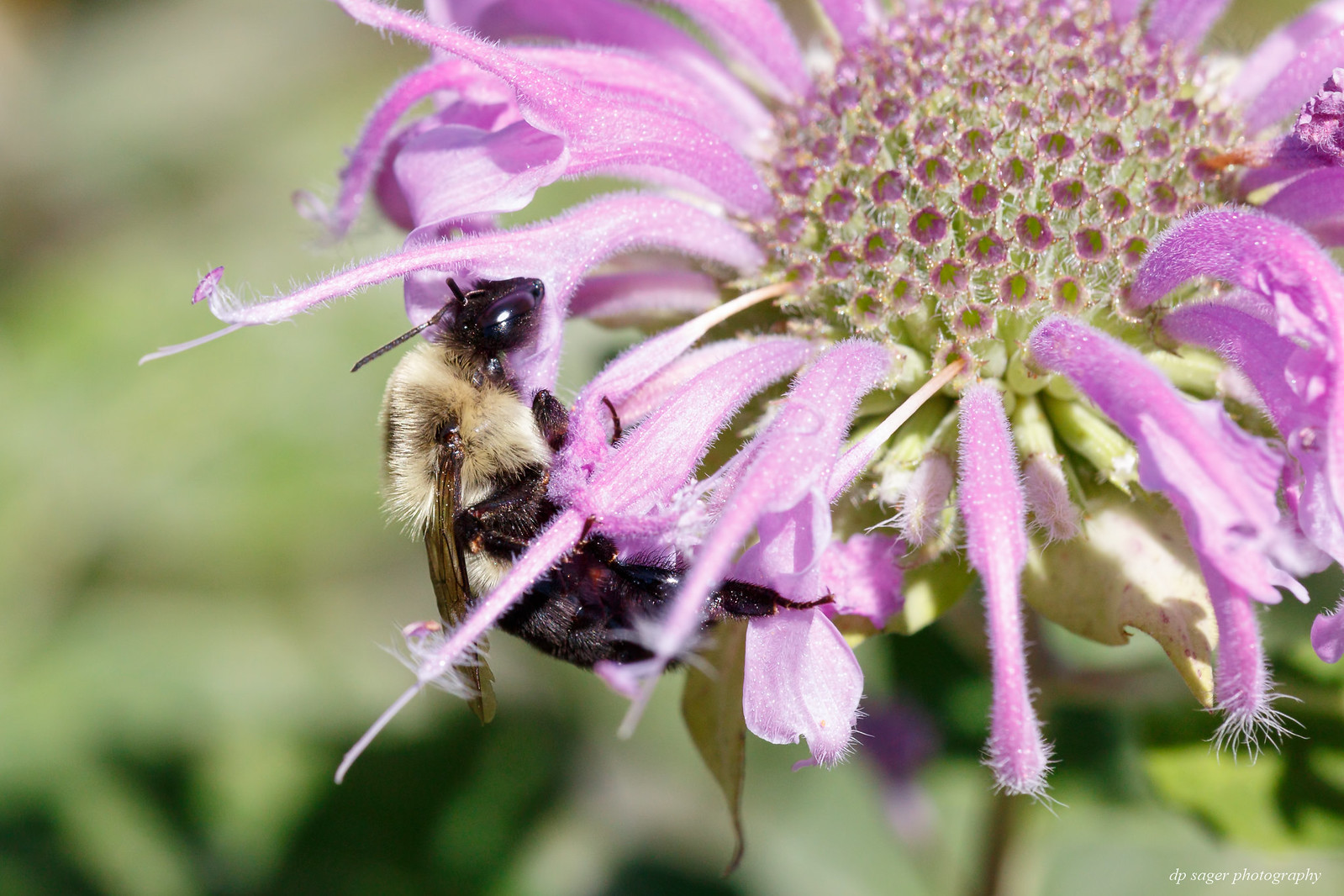Intense close-ups of bees
Apr 29, 2020 08:08:09 #
The western honey bee can be found on every continent except Antarctica. The species is believed to have originated in Africa or Asia, and it spread naturally through Africa, the Middle East and Europe. Humans are responsible for its considerable additional range, introducing European subspecies into North America (early 1600s), South America, Australia, New Zealand, and eastern Asia.
Denver Botanic Gardens by Paul Sager, on Flickr

Many of us are revisiting our portfolios, completing long overdue organizational work or using new tools on old images. Whether you start from an original high-quality JPEG or RAW, non destructive tools like Lightroom let you start / restart an image as if fresh from the camera this morning. Personally, I strive for a consistency of results and use LR Develop presets before image-specific tweeks.
Images in this post all were captured in RAW using an EOS 5DIII. The files were processed in Adobe Lightroom 6 with additional noise processing in Topaz DeNoise 6. Except for the first image from the Denver Botanic Gardens, all images feature the EF 180mm f/3.5L Macro USM. Use the URL links that are the titles of each image for access to the EXIF details.
Chicago Bee

The bee is domesticated but not tamed.
Busy Bees

Bees make honey as stored food to feed the colony over winter when they are unable to forage.
Chicago bee and flower

Unlike most other bee species, western honey bees have perennial colonies which persist year after year. Because of this high degree of sociality and permanence, western honey bee colonies can be considered superorganisms. This means that reproduction of the colony, rather than individual bees, is the biologically significant unit.
Chicago Bee

Humans have been collecting honey from western honey bees for thousands of years, with evidence in the form of rock art found in France and Spain, dating to around 7,000 BCE.
Chicago Bee

These images are sized to fill your wide-screen display. Try using <F11> to maximize your browser window for the full effect. If the images overshoot your display, such as a laptop, just click on the image or the URL link and they'll resize to your screen from the host Flickr site. You can click a bit further into the image details on the Flickr page, if desired. EXIF data is available from the host Flickr pages as well. On the Flickr site, use your <L>key for Large and the <F11> for the full-screen.
Denver Botanic Gardens by Paul Sager, on Flickr

Many of us are revisiting our portfolios, completing long overdue organizational work or using new tools on old images. Whether you start from an original high-quality JPEG or RAW, non destructive tools like Lightroom let you start / restart an image as if fresh from the camera this morning. Personally, I strive for a consistency of results and use LR Develop presets before image-specific tweeks.
Images in this post all were captured in RAW using an EOS 5DIII. The files were processed in Adobe Lightroom 6 with additional noise processing in Topaz DeNoise 6. Except for the first image from the Denver Botanic Gardens, all images feature the EF 180mm f/3.5L Macro USM. Use the URL links that are the titles of each image for access to the EXIF details.
Chicago Bee

The bee is domesticated but not tamed.
Busy Bees

Bees make honey as stored food to feed the colony over winter when they are unable to forage.
Chicago bee and flower

Unlike most other bee species, western honey bees have perennial colonies which persist year after year. Because of this high degree of sociality and permanence, western honey bee colonies can be considered superorganisms. This means that reproduction of the colony, rather than individual bees, is the biologically significant unit.
Chicago Bee

Humans have been collecting honey from western honey bees for thousands of years, with evidence in the form of rock art found in France and Spain, dating to around 7,000 BCE.
Chicago Bee

These images are sized to fill your wide-screen display. Try using <F11> to maximize your browser window for the full effect. If the images overshoot your display, such as a laptop, just click on the image or the URL link and they'll resize to your screen from the host Flickr site. You can click a bit further into the image details on the Flickr page, if desired. EXIF data is available from the host Flickr pages as well. On the Flickr site, use your <L>key for Large and the <F11> for the full-screen.
Apr 29, 2020 08:09:18 #
Apr 29, 2020 08:09:44 #
Apr 29, 2020 08:18:26 #
Apr 29, 2020 09:24:23 #
Apr 29, 2020 09:27:41 #
Apr 29, 2020 11:07:54 #
Apr 29, 2020 11:08:36 #
Apr 29, 2020 15:10:53 #
Thank you Bill, Architect1776, samantha, photosbytw, Charles, Mike, Rick! I have a mixture of quotes, facts and bees queued up. I seem to have run out quotes / facts before the bee re-edits.  Glad you enjoyed these.
Glad you enjoyed these.
 Glad you enjoyed these.
Glad you enjoyed these.Apr 29, 2020 16:59:30 #
Well, I'll bee darned if I could tell those are Chicago bees. 😉
Ours downstate look very similar. We should meet in Peoria and see if they play there.
Ours downstate look very similar. We should meet in Peoria and see if they play there.
Apr 30, 2020 05:45:04 #
CHG_CANON wrote:
The western honey bee can be found on every contin... (show quote)
Fun series Paul, looks great on full screen
Apr 30, 2020 07:34:28 #
Apr 30, 2020 07:34:54 #
This is an outstanding set, Paul, with amazing photos and an excellent narrative.
Apr 30, 2020 07:50:29 #
Apr 30, 2020 08:07:30 #
If you want to reply, then register here. Registration is free and your account is created instantly, so you can post right away.














